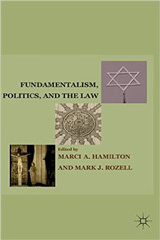When the Internet began, there was a great deal of celebration that this would be the route to true democracy, justice, and progress. At first, it was such a wondrous thing, it was difficult to imagine its underbelly. But the child pornographers wasted no time polluting the ether with some of the most heinous crimes there are. The Internet in the end, reflects the human condition—a deep and complex mix of good and bad.
Just like real property, good fences make good neighbors in the ethersphere. Therefore, the critical issue facing us all is when will truly effective fences on the Internet become operative. The best fences protect privacy, but they are also constructed in a way that permits the authorities to enforce the law.
The End of Privacy for Child Pornographers
The web has often persuaded people that they can easily trade in illegal images and transactions without consequence, but that is no longer true. While it is true that the child pornographers leapt ahead of law enforcement early on as they took advantage of the Wild West era of the World Wide Web, national and international prosecutors and the western countries have responded with diligent efforts and dedicated resources to aggressively fight them.
The latest person to learn that the Internet (and his computer with its shared child porn images) can be the enemy is former Subway spokesperson, Jared Fogle, who is pleading guilty to child solicitation and porn charges. He had no way out after the former Executive Director of the Jared Foundation, Fogle’s charity, was arrested for having and producing hundreds of images of child pornography. The latest reports indicate that Fogle was not just a passive participant, either.
The problem of child pornography is extreme, so this is just one story of success amidst millions of images shared without consequence, but the good news is that no one viewing or producing child pornography can feel secure. That is a deterrent in itself.
Of course, there is more to be done. For example, Congress desperately needs to amend the law making it possible for victims to sue the viewers and producers of their porn images after the Supreme Court read the law narrowly in U.S. v. Paroline, as I discuss here. Fogle is being forced to pay $1.4 million to 14 victims. There is little doubt that is a drop in the bucket of the children he harmed through not only soliciting but also viewing child pornography.
The Alliances of Child Sex Abuse Victims Made Possible by the Internet
The Internet has also been a tool of empowerment for the victims of child sex abuse whose trauma before the Internet had routinely led them to a place of isolation and loneliness. These victims lived in the shadows with their accumulation of shame and humiliation for decades while the rest of us believed it just didn’t happen that often. The Internet has accomplished extraordinary good as the survivors have found each other and been able to unite and share information that in the past would have been kept in the dark in all likelihood for their entire lives. The information they have been able to share has made it possible to see the patterns of cover up in our major institutions from churches to universities to high schools, and for the rest of us to learn that there is an army of victims who need and deserve justice and support.
Without the web, these victims were at best solitary individuals who had the misfortune of being a victim. With the Internet, these children, men, and women no longer need to remain shackled in silence. The movements now afoot for the protection of our children would not exist but for it, from SNAP to Lauren’s Kids to SOL-reform to Erin’s law.
The Lack of Privacy for Adults Dealing with Adults Legally
The hacking of data about the Ashley Madison site for adults who seek affairs outside marriage is on a completely different plane and shows how far we have to go in refining the fences on the Internet.
The release of millions of names and credit card numbers (or at least the last 4 numbers) has shown how easy it can be for hackers to share at will what others assumed was confidential. Effective fences are needed to keep adults’ legal exchanges from being released. Ashley Madison is just one corner of the mountain of information that is stored on the Internet and available for criminal use through identity hacking or for public embarrassment and judgment by hackers.
Thus, the challenges continue to be enormous: how do we protect legal behavior and information while deterring illegal behavior? That is, in fact, the question we have always faced and will always face, Internet or not. But now the accumulation of crimes and privacy breaks is larger than ever before. That is why every free country needs to invest in finding the best fences for safety and security and privacy that can be built on the Internet. We’re not there yet.










The calm citation of Ashley Madison, something many have little sympathy for, is appreciated — adultery especially among hypocrites is something many find distasteful, but release of all the assumed private material is much more so in many cases.